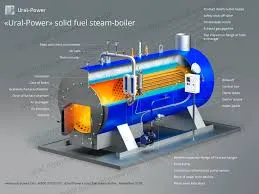
ធ្នូ . 01, 2024 13:38 Back to list
steamboilers
Understanding Steamboilers The Heart of Steam Power
Steamboilers have played a crucial role in the evolution of energy generation and industrial processes. These remarkable machines, designed to generate steam by heating water, have been at the core of our technological advancement since the dawn of the industrial revolution. This article delves into the history, functioning, types, and significance of steamboilers in various applications.
Historical Context
The inception of the steamboiler can be traced back to the early 18th century when innovators like Thomas Newcomen and James Watt began developing steam engines. These engines relied on steam produced from boiling water to create mechanical energy. The steamboiler emerged as a critical component, as it served to generate the steam required to power these machines. The successful harnessing of steam power revolutionized industries, from textiles to transportation, laying the groundwork for modern engineering and manufacturing.
Functioning of a Steamboiler
At its core, a steamboiler operates on a simple principle water is heated to its boiling point, converting it into steam. This steam is then channeled to various systems where it can perform work, such as turning turbines or powering machinery. The basic components of a steamboiler include
1. Water Tank The primary reservoir where water is stored. 2. Burner or Heating Element The source of heat, which can be fueled by gas, oil, electricity, or even biomass. 3. Pressure Vessel A robust structure that contains the water and steam under pressure. 4. Steam Drum A horizontal cylinder that separates steam from water, ensuring only steam is directed to the system. 5. Safety Valves Essential for maintaining safe pressure levels and preventing explosions.
The combustion of fuel generates heat, which is transferred to the water, creating steam. As the steam is generated, it builds up pressure, which can then be controlled and directed to do useful work.
Types of Steamboilers
Steamboilers come in various designs to suit different applications. The major types include
steamboilers

1. Fire-tube Boilers In these systems, hot gases from combustion pass through tubes submerged in water, heating the water and generating steam. Fire-tube boilers are known for their simplicity and efficiency, making them ideal for smaller applications and low-pressure needs.
2. Water-tube Boilers In contrast, water-tube boilers have water circulating through tubes heated by hot gases. This design allows for higher pressure and temperature capabilities, making them suitable for large-scale power plants and industrial processes.
3. Electric Boilers These utilize electric heating elements to convert water into steam, offering a clean and efficient alternative to traditional fuel-based systems. They are often used in applications where space is limited or emissions are a concern.
4. Biomass Boilers These boilers burn organic materials to generate steam, representing an environmentally friendly energy solution. They are gaining traction as industries aim for more sustainable practices.
Significance in Modern Applications
Steamboilers continue to hold significance across various sectors. In power generation, they are used in thermal power plants to convert heat energy into electricity. In the manufacturing industry, steam is vital for processes such as sterilization, cooking, and drying. Furthermore, steamboilers are instrumental in heating systems for buildings and in hospitality applications like commercial kitchens.
Moreover, the advancements in technology have led to the development of more efficient boilers that reduce fuel consumption and minimize emissions. With the growing emphasis on sustainability, modern designs are evolving to incorporate renewable energy sources and improve energy efficiency.
Conclusion
Steamboilers are the backbone of many industrial processes and energy generation systems. Their ability to convert water into steam efficiently has powered industries for centuries and continues to be crucial in modern applications. As we strive for more sustainable and efficient energy solutions, the evolution of steamboilers will undoubtedly play a vital role in shaping our industrial landscape for the future. Understanding and optimizing the performance of these systems is essential for engineers, businesses, and anyone invested in the advancement of technology and energy efficiency.
-
Oil Fired Hot Water Boilers Sale - High Efficiency & Affordable
NewsJul.31,2025
-
High-Efficiency Commercial Oil Fired Steam Boiler for Industry
NewsJul.30,2025
-
High-Efficiency Biomass Fired Thermal Oil Boiler Solutions
NewsJul.30,2025
-
High Efficiency Gas Fired Thermal Oil Boiler for Industrial Heating
NewsJul.29,2025
-
High-Efficiency Gas Fired Hot Water Boiler for Sale – Reliable & Affordable
NewsJul.29,2025
-
High Efficiency Biomass Fired Hot Water Boiler for Industrial and Commercial Use
NewsJul.29,2025
Related PRODUCTS






















